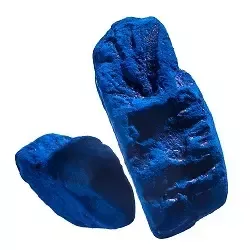sulfur black 1 manufacturer
Insights into Sulfur Black 1 Manufacturing
Sulfur Black 1 is a prominent synthetic dye known for its deep black hue and robust durability. Widely used in various industries, including textiles, leather, and paper, its production involves a complex synthesis process that combines chemical knowledge with practical manufacturing expertise. Understanding the nuances of Sulfur Black 1 manufacturing provides insight into its wide application and importance in industrial contexts.
Overview of Sulfur Black 1
Sulfur Black 1, a thiazine dye, is essentially a sulfurized black dye that owes its color fastness to its chemical structure. It is produced from the reaction of sulfur with aromatic compounds. The dye is particularly favored in the textile industry for dyeing cotton and other cellulose fibers, due to its resistance to fading and washing. It can be applied in both cold and hot dyeing processes, making it versatile and useful for various fabric types.
The Manufacturing Process
The manufacturing of Sulfur Black 1 involves several key steps
1. Raw Material Preparation The process begins with the selection of raw materials, typically involving sulfur, aniline derivatives, and other organic compounds. These materials are sourced from reliable suppliers to ensure consistent quality.
2. Chemical Reaction The core of the manufacturing process is a chemical reaction where sulfur reacts with aromatic compounds. This reaction occurs under controlled conditions of temperature and pressure, typically in specialized reactors. The controlled environment is crucial as it influences the yield and quality of the dye produced.
3. Formation of the Dye The reaction leads to the formation of a thick paste, which contains the black dye in a unrefined state. This paste is often a colloidal solution comprising various sulfur-organic compounds.
sulfur black 1 manufacturer

4. Purification After the initial synthesis, the crude dye undergoes purification to remove any impurities or unreacted materials. This step may involve filtration, centrifugation, and washing with solvents.
5. Drying and Milling The purified dye is then dried to stabilize it and remove any residual moisture. Following drying, the material is milled into a fine powder to ensure ease of use during application.
6. Quality Control A significant aspect of the manufacturing process is quality control. Samples of Sulfur Black 1 are taken to ascertain their color fastness, solubility, and overall effectiveness. Rigorous testing ensures that the final product meets industry standards.
7. Packaging and Distribution Once the dye passes quality tests, it is then packaged in suitable containers to prevent moisture absorption and degradation. The finished product is then distributed to various industries, including textile manufacturers, dye houses, and leather processing companies.
Environmental and Safety Considerations
Manufacturers of Sulfur Black 1 are increasingly aware of the environmental and health implications associated with its production. As a result, many have adopted more sustainable practices. This includes the use of closed-loop systems to recycle water and manage waste effectively. Additionally, efforts are made to minimize emissions during the production process, adhering to international environmental standards.
Safety is also paramount during manufacturing. Personnel handling raw materials and the dye itself are provided with personal protective equipment (PPE) and trained in safe handling practices to prevent exposure and ensure a safe work environment.
Conclusion
Sulfur Black 1 continues to be an essential dye in various sectors due to its unique properties and application versatility. The manufacturing process, while complex, is fundamental to producing high-quality dyes that meet the rigorous demands of the industry. As manufacturers focus on sustainability and safety, the future of Sulfur Black 1 production looks promising, ensuring a balance between industrial needs and environmental stewardship. This ongoing commitment not only enhances product quality but also contributes to a more sustainable future in the dyeing and textile industry.
-
The Timeless Art of Denim Indigo Dye
NewsJul.01,2025
-
The Rise of Sulfur Dyed Denim
NewsJul.01,2025
-
The Rich Revival of the Best Indigo Dye
NewsJul.01,2025
-
The Enduring Strength of Sulphur Black
NewsJul.01,2025
-
The Ancient Art of Chinese Indigo Dye
NewsJul.01,2025
-
Industry Power of Indigo
NewsJul.01,2025
-
Black Sulfur is Leading the Next Wave
NewsJul.01,2025

Sulphur Black
1.Name: sulphur black; Sulfur Black; Sulphur Black 1;
2.Structure formula:
3.Molecule formula: C6H4N2O5
4.CAS No.: 1326-82-5
5.HS code: 32041911
6.Product specification:Appearance:black phosphorus flakes; black liquid

Bromo Indigo; Vat Bromo-Indigo; C.I.Vat Blue 5
1.Name: Bromo indigo; Vat bromo-indigo; C.I.Vat blue 5;
2.Structure formula:
3.Molecule formula: C16H6Br4N2O2
4.CAS No.: 2475-31-2
5.HS code: 3204151000 6.Major usage and instruction: Be mainly used to dye cotton fabrics.

Indigo Blue Vat Blue
1.Name: indigo blue,vat blue 1,
2.Structure formula:
3.Molecule formula: C16H10N2O2
4.. CAS No.: 482-89-3
5.Molecule weight: 262.62
6.HS code: 3204151000
7.Major usage and instruction: Be mainly used to dye cotton fabrics.

